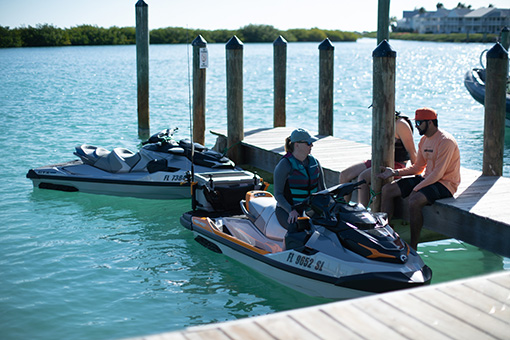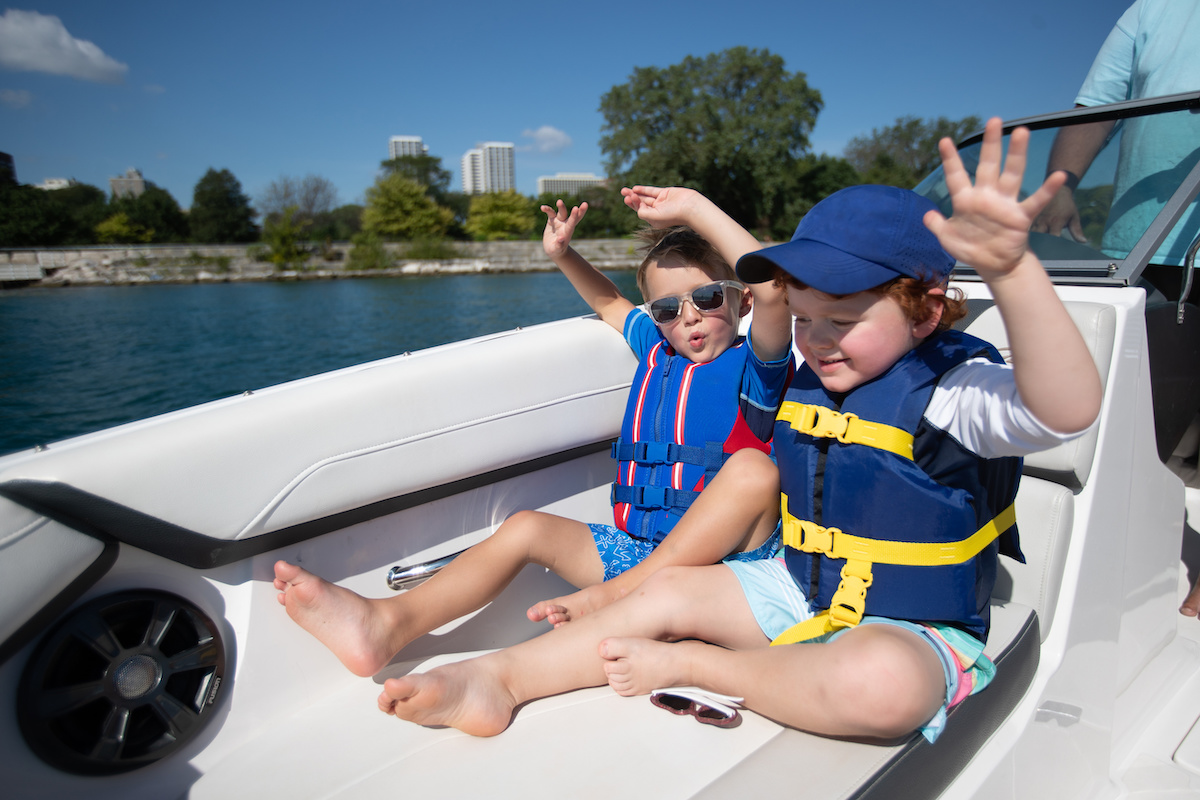Teaching your kid to fish is a fun and educational way to create lasting family memories. But of course, embarking on a family fishing trip requires a bit more preparation and planning than a solo excursion. Read on to learn essential tips for fishing with kids that will help ensure your family fishing trips are memorable for all the right reasons.
5 Essential Fishing Tips for Kids
Want to get your kids hooked on fishing? (Pun intended.) Follow these helpful tips when teaching kids to fish:

1. Safety Comes First, Always
With little anglers in tow, safety should always come first. (Heck, safety comes first even for a seasoned pro!) Kids are naturally curious (and sometimes impulsive), so you’ll need to cultivate a safe fishing environment.
- Wear life jackets. Ensure every child wears a properly fitted, U.S. Coast Guard-approved life jacket at all times. (Pro tip: kids are more apt to wear their life jacket when they get to pick out the color and design.)
- Sun protection. Pack plenty of sunscreen, wide-brimmed hats, and sunglasses to protect your kids from the sun's rays. Don’t forget to reapply sunscreen every two hours—or even sooner after taking a dip in the water.
- Practice hook safety. We always recommend teaching kids how to handle fishing hooks safely. Make sure to supervise them closely when baiting hooks and casting. And consider using barbless hooks initially, as they’re easier to remove if they accidentally snag.
- Instill an awareness of surroundings. Always teach your kiddos to be mindful of where they’re walking and to avoid getting too close to the water's edge.
2. Pick a Kid-Friendly Fishing Destination
Every seasoned angler knows that the location can make or break a fishing experience. We recommend choosing a location that is easily accessible, safe, and populated with fish (even if those fish are on the smaller side).
- Local ponds and lakes. Often calmer and shallower than rivers or the ocean, ponds and lakes are ideal for beginners. Look for areas with docks or accessible shorelines where kids can cast comfortably.
- Designated kids' fishing areas. Many parks and/or wildlife refuges have designated fishing areas specifically for children. And many of them come with amenities like picnic tables and restrooms.
- "Catch and release" focus. Catching and releasing is a great way to introduce young anglers to the wonders of fishing—without the added pressure.
Check out these Top 15 U.S. Summer Fishing Destinations.
3. Pack the Right Equipment
Wondering what to take fishing with kids? We recommend packing the following:
- Kid-sized fishing gear. Lightweight rods and reels are easy for small hands to manage and will make casting/reeling significantly more enjoyable. Personally? We like push-button spincast reels, which are way simpler for beginners.
- Tackle box basics. A small tackle box with a few hooks (barbless if possible), bobbers, sinkers, and a variety of colorful bait (worms, mealworms, artificial lures) is perfect for a little skipper.
- And of course, the usuals. Make sure to pack their favorite snacks, drinks, sunscreen, hats, insect repellent, a small first-aid kit, etc.
4. Offer Some Introductory Fishing Tips
Obviously, you’ll want your kids’ introduction to fishing to be straightforward and fun. Here are some introductory tips to ensure it’s just that.
- Start with the basics. We always recommend teaching your kids how to cast in an open area (like a lawn) before heading to the water.
- Mastering the bobber. Bobber fishing is often the most engaging for kids, as they can keep an eye on the bobber and let you know when it dips below. Use colorful bobbers to add to the fun.
- Simple baiting techniques. Show your kiddos how to bait a hook safely and effectively with worms. Make it a learning experience by explaining what the fish might like to eat.
- Celebrate small victories. Every nibble, every cast, and every tiny fish caught is a reason to celebrate! As with anything, positive reinforcement will keep your kiddos motivated.
- Keep sessions short. Kids have short attention spans! So, don't make them fish for hours—especially in the beginning. Shorter, more frequent trips are key.
Read More: The Ultimate Guide to Catch and Release Fishing
5. Make Sure They’re Learning Something
Taking your kids fishing offers a fantastic opportunity to teach them about nature, conservation, and patience. Make the most of it!
- Identify fish and other wildlife. Point out birds, insects, and other interesting wildlife around the fishing spot.
- Practice knot tying. As young skippers get a bit older, you can introduce them to basic fishing knots. This is a valuable skill that they’ll use for years to come.
- Explain that patience is a virtue. Fishing requires patience—which is a valuable life skill. Explain that sometimes you have to wait for the fish to bite, and that’s okay. Use the waiting time to tell stories or play simple games.
The Ultimate Guide to Teaching Kids to Fish
As we mentioned, teaching kids to fish is a fun and enjoyable way to introduce them to the joys of being on the water and make quality family memories. Remember that safety comes first, and patience is key! And while you probably won’t reel in the big ones at first, seeing the smile on your kids’ faces when they catch their first fish will be even more fulfilling—trust us!
Simply follow these tips to ensure your children’s first few fishing excursions are fun, entertaining, and educational. (And check out the Articles & Inspiration section of our website for more helpful guides like this one.) Happy casting!

